The Wyoming lease agreement is an express legal document permitting a tenant to use the property in exchange for a described monthly monetary payment. The contract covers the terms to the lease, deposit amount, and contact information for the involved parties. The purpose of the form is to establish a written understanding to protect the interest of both the lessor and lessee.
Lease Agreements By Type
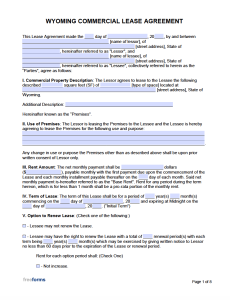 Commercial Lease Agreement – Incorporated into an arrangement to rent a given space to conduct business for a predetermined period.
Commercial Lease Agreement – Incorporated into an arrangement to rent a given space to conduct business for a predetermined period.
Download: PDF, Word (.docx)
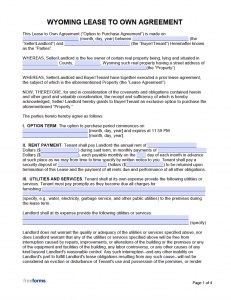 Lease to Own Agreement – A contract utilized to outline the details of a lease that includes an option to buy at the end of the term.
Lease to Own Agreement – A contract utilized to outline the details of a lease that includes an option to buy at the end of the term.
Download: PDF, Word (.docx)
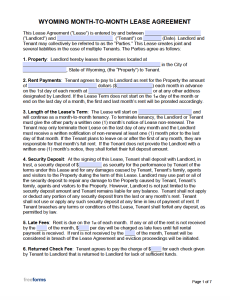 Month-to-Month Lease – An interim agreement for the tenant to utilize a property for an indefinite period. The language within allows the lessor or lessee to conclude the lease as long as the other party is given a thirty (30) days notice prior.
Month-to-Month Lease – An interim agreement for the tenant to utilize a property for an indefinite period. The language within allows the lessor or lessee to conclude the lease as long as the other party is given a thirty (30) days notice prior.
Download: PDF, Word (.docx)
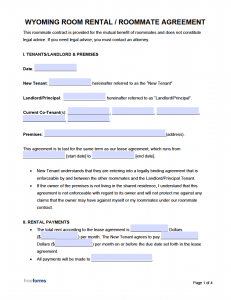 Roommate Agreement – Organizes the settled accord involving the rental of a room within a domicile.
Roommate Agreement – Organizes the settled accord involving the rental of a room within a domicile.
Download: PDF, Word (.docx)
Standard Lease Agreement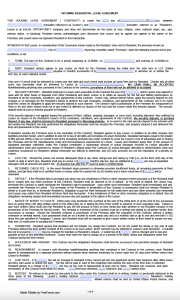 – Provides a consistent written recording of the terms conditions of an arrangement to lease a residential unit.
– Provides a consistent written recording of the terms conditions of an arrangement to lease a residential unit.
Download: PDF
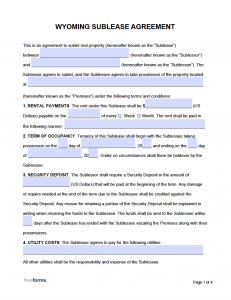 Sublease Agreement – A provisional document clarifying conditions in which a tenant of a rental will “sublease” a part or all of the dwelling to an alternate individual.
Sublease Agreement – A provisional document clarifying conditions in which a tenant of a rental will “sublease” a part or all of the dwelling to an alternate individual.
Download: PDF, Word (.docx)
Landlord-Tenant Laws
The technicalities of tenant/landlord law, as well as rental regulation, can be reviewed within the contents of the Wyoming Residential Rental Property Act (§ 1-21-1201 — 1-21-1211).
Required Landlord Disclosures
The state of Wyoming legislation does not stipulate that numerous obligated disclosures must be included within the lease agreement. It is suggested to add provisions to address which party is responsible for any utility payments, although the state does not require it.
Non-Refundable Deposits – It must be designated in the rental agreement if a portion of the rental deposit is to be deemed non-refundable and will not be reissued to the tenant upon the termination of the lease (§ 1-21-1207).
Lead-Based Paint (42 U.S. Code § 4852d) – The federal government mandates that the landlord notify the tenant of any unsafe lead-based paint precautions the property may present. The federal form must accompany the lease in the case that the property was constructed before 1978.
When is Rent Late?
Wyoming does not have a State-enforced allocated grace period for rental payments. It is recommended to cover the conditions of late fees within the lease agreement.
Late Fees
There is no statute referring to a limitation set on late fees for rental payments that are overdue. There is, however, a stipulation that language referring to the late fee schedule and amount must be included in the lease agreement to be imposed upon a tenant.
NSF Checks
Per Wyoming Statute § 1-1-115, a fee of up to $30 can be enforced by the landlord for any returned rental check. An exact amount should be noted in the lease agreement.
Security Deposit Maximum
The state has no fixed maximum amount a landlord can request from a tenant to occupy a residence. This being said, a predetermined amount must be detailed in the lease agreement prior to the signing of the document.
Security Deposit Return
The delivery of the security deposit must be distributed within 30 days from the completion of the lease term or within 15 days of acquiring the tenant’s new address, whichever time frame comes last (per § 1-21-1208). Should the tenant be responsible for any necessary repairs to the domicile, an additional 30 days will be allotted to the landlord to return the deposit. For utility deposit reimbursement, the required timespan to compensate the tenant is a total of 10 days after confirmed settlement of all utility accounts.
Landlord’s Entry
The law in the state of Wyoming does not cover a provision pertaining to the landlord’s entry to a rental property or how much notice to give before doing so. This condition should be discussed and included in the written lease agreement, although it is not mandated by the state.


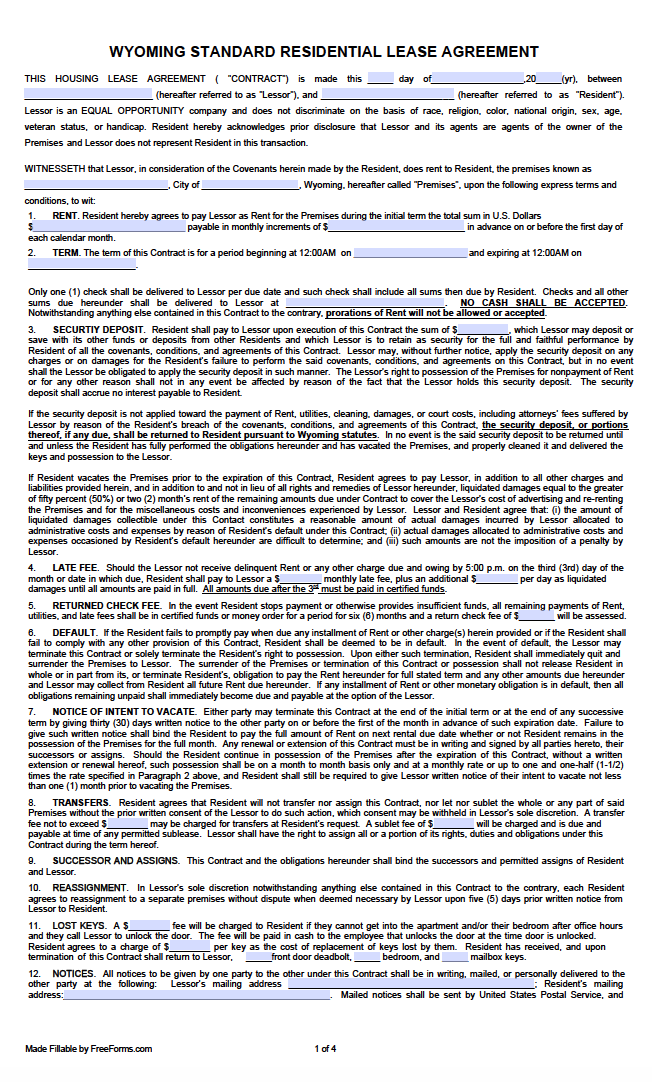
0 comments
Comments are closed.